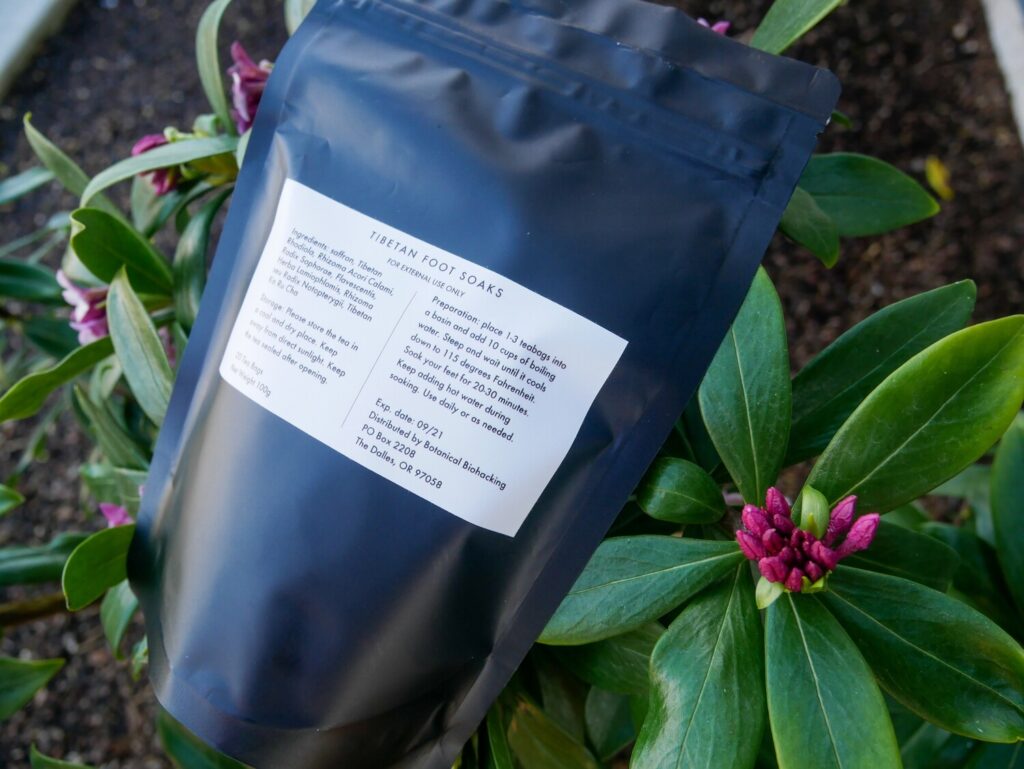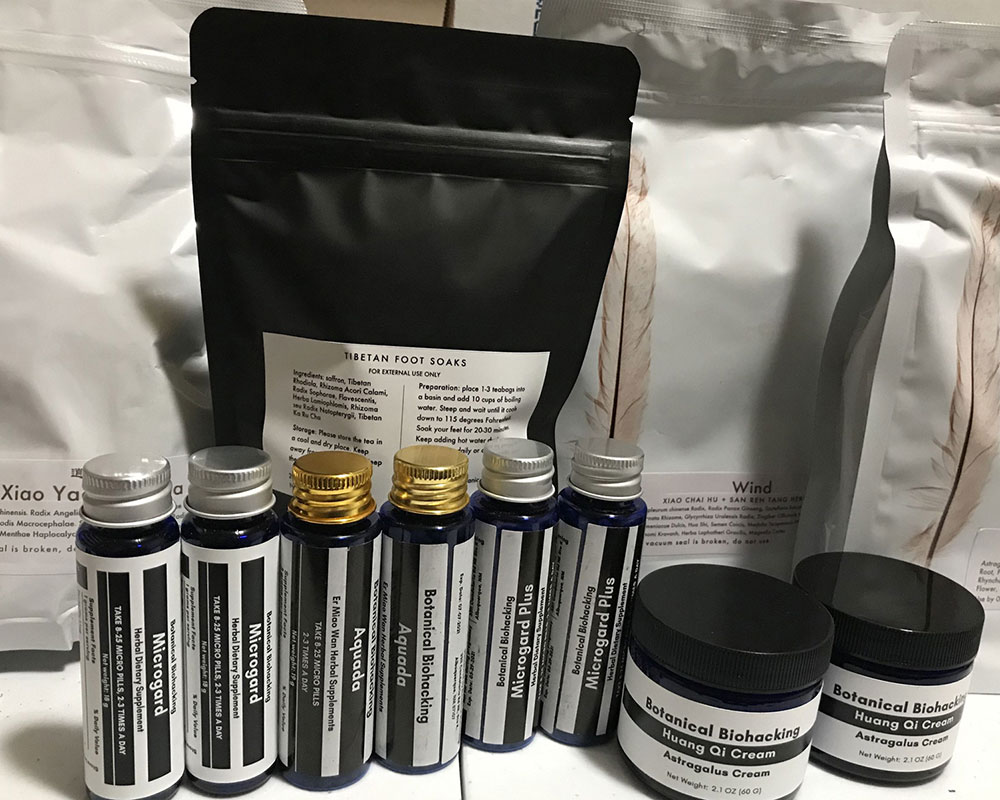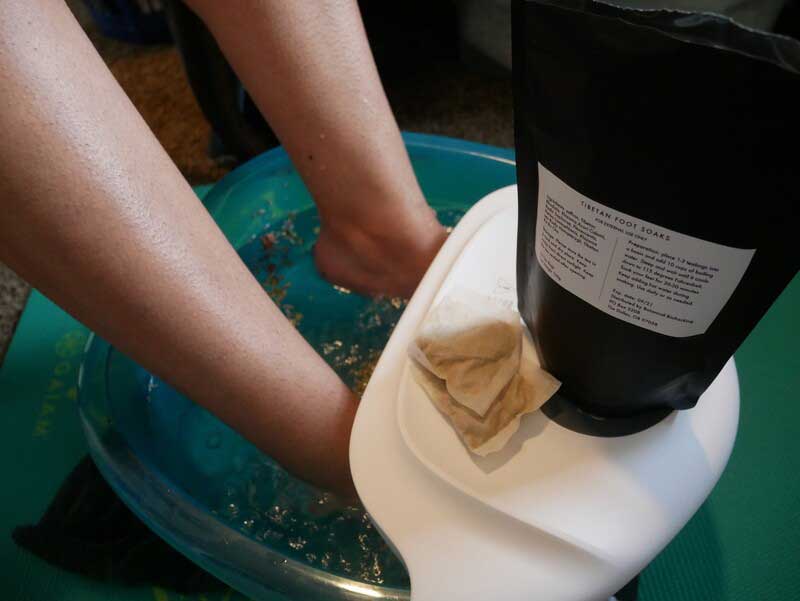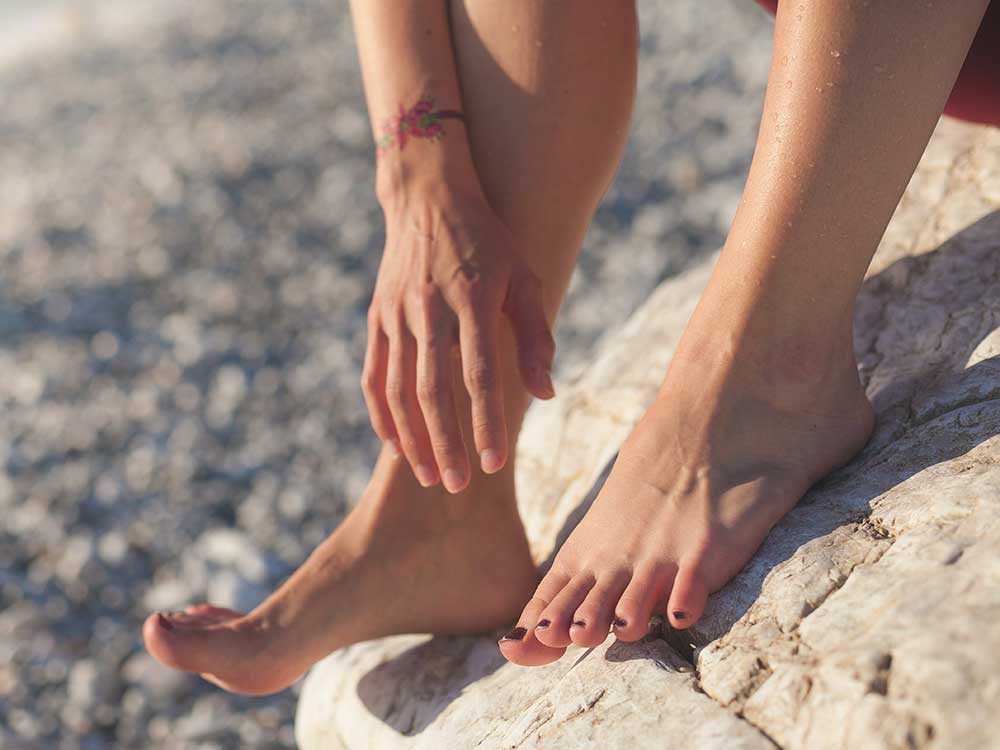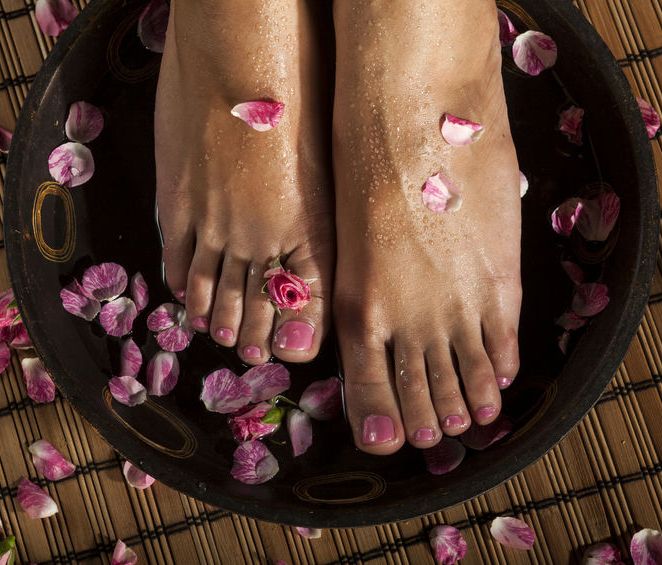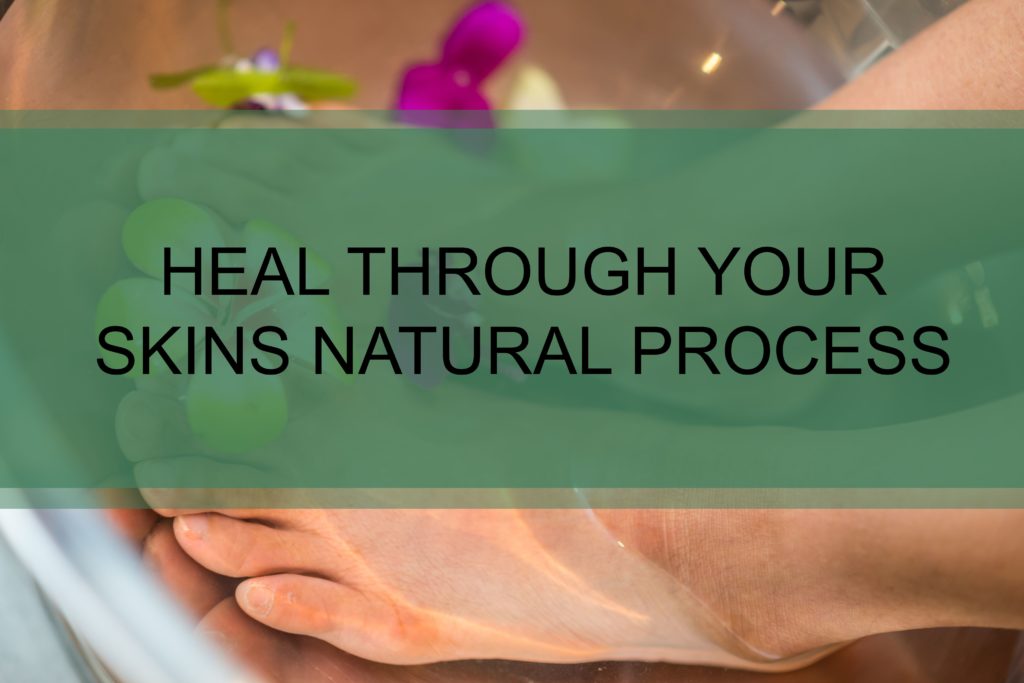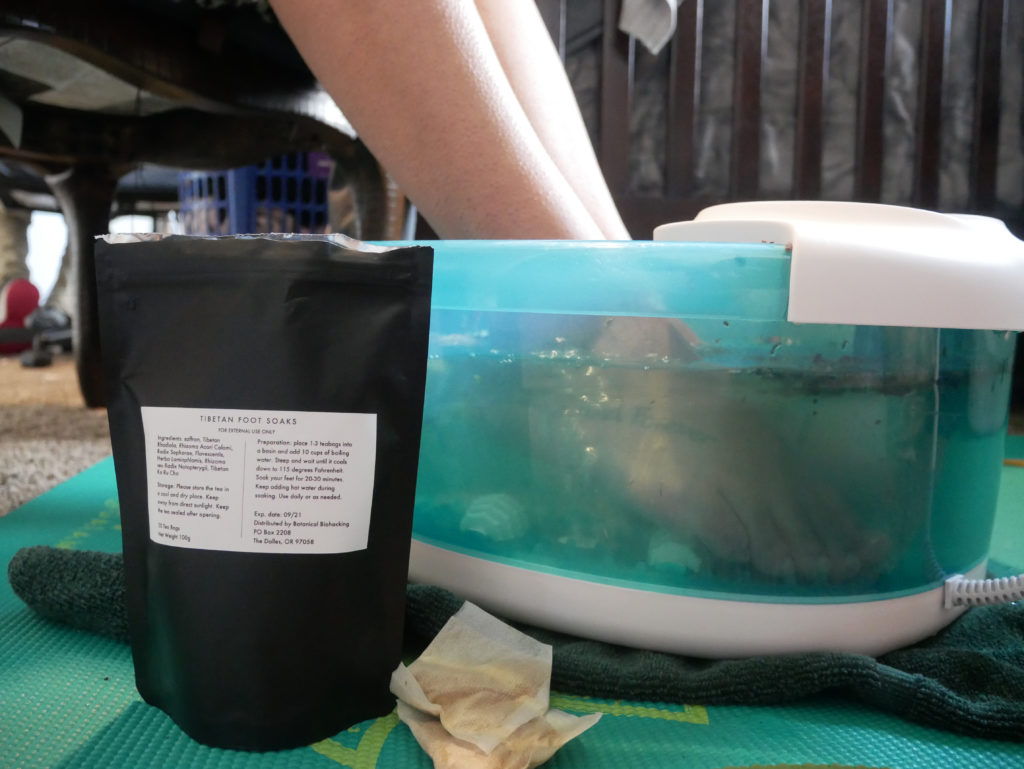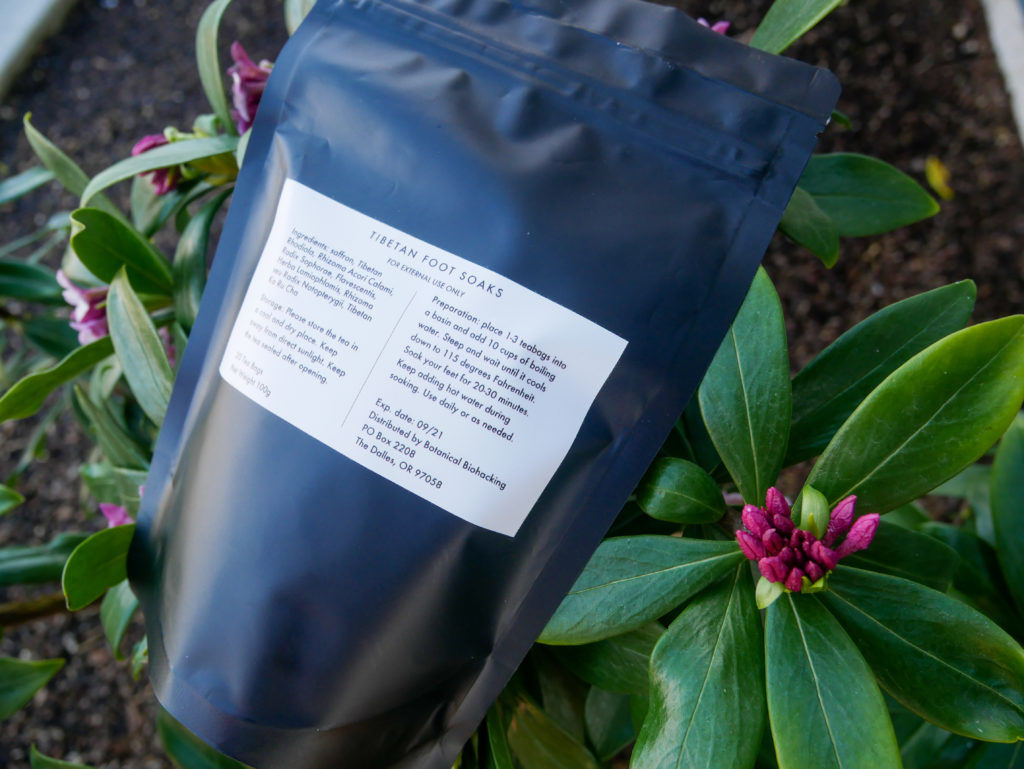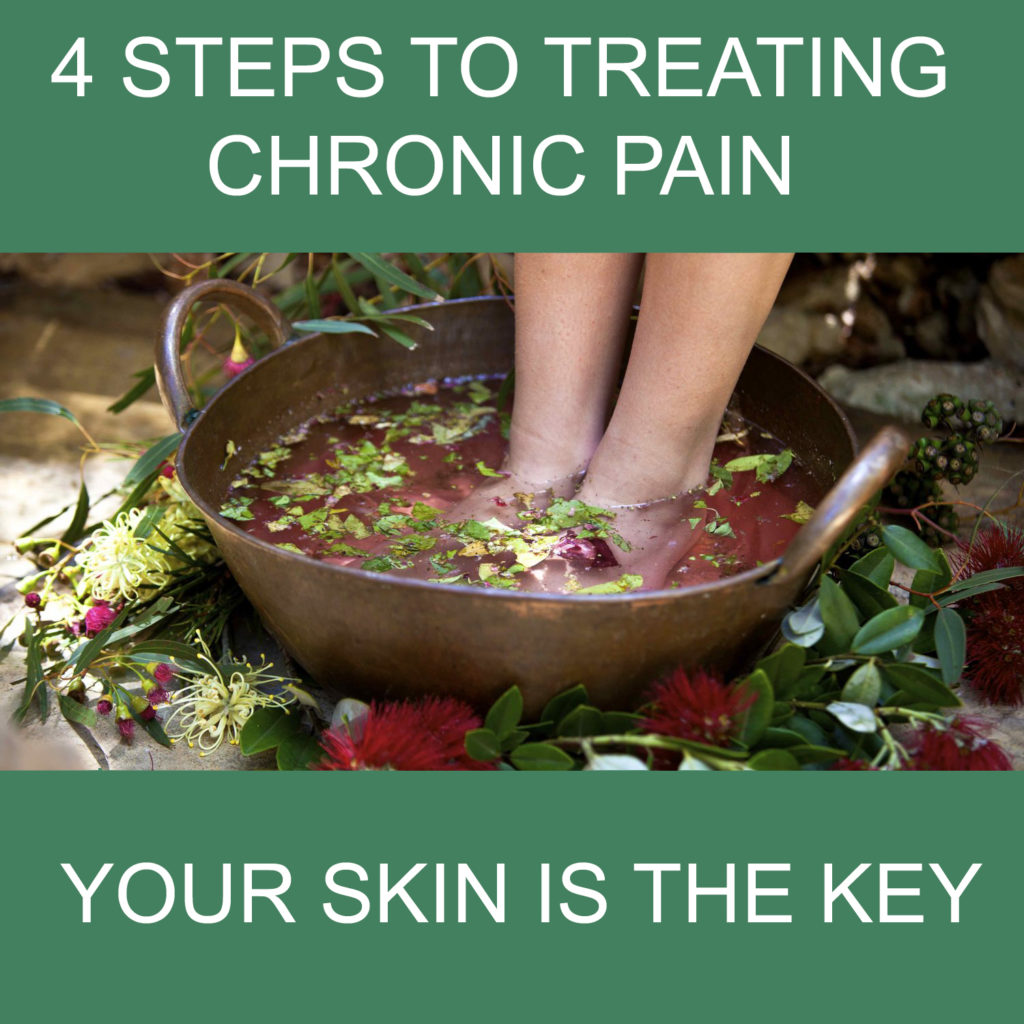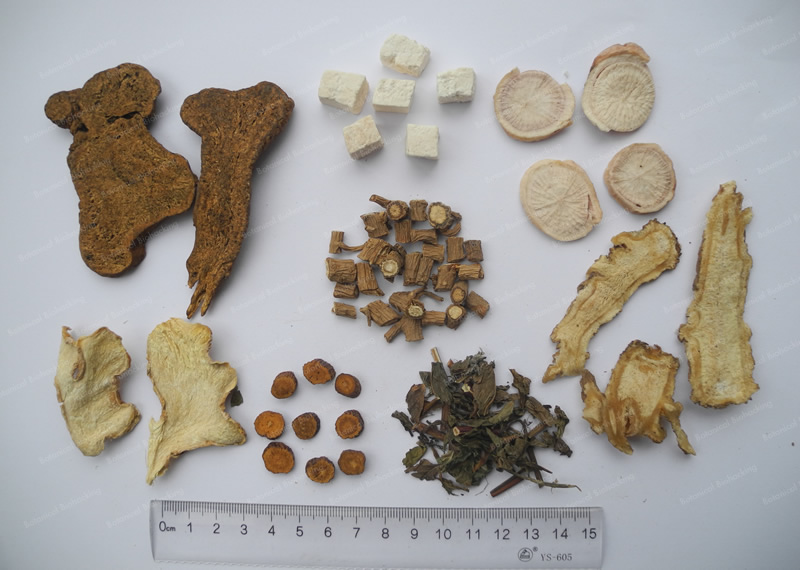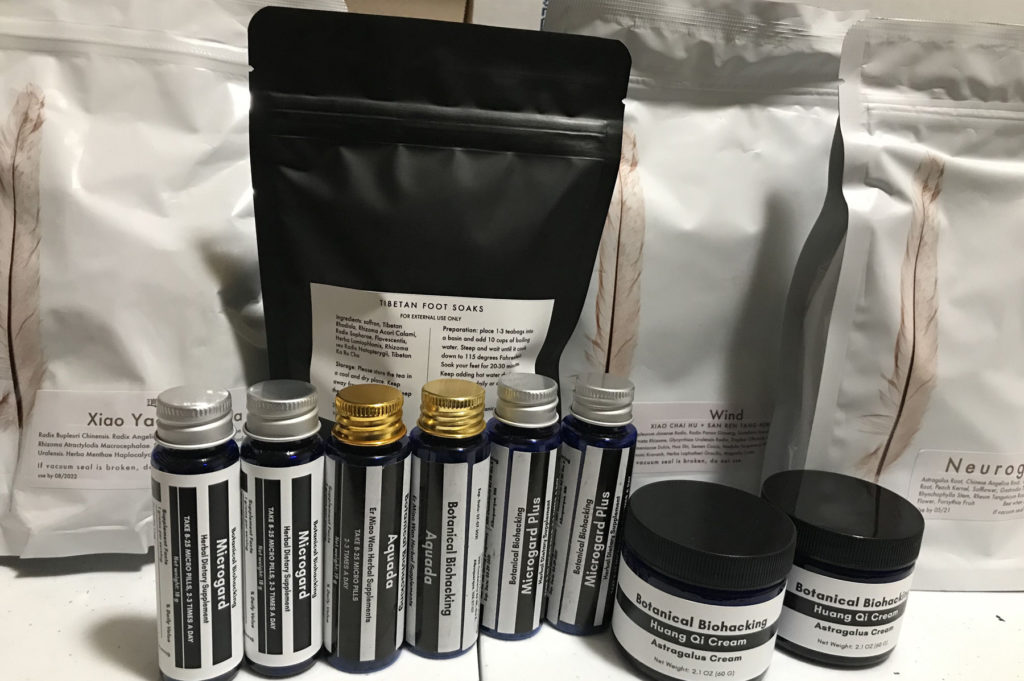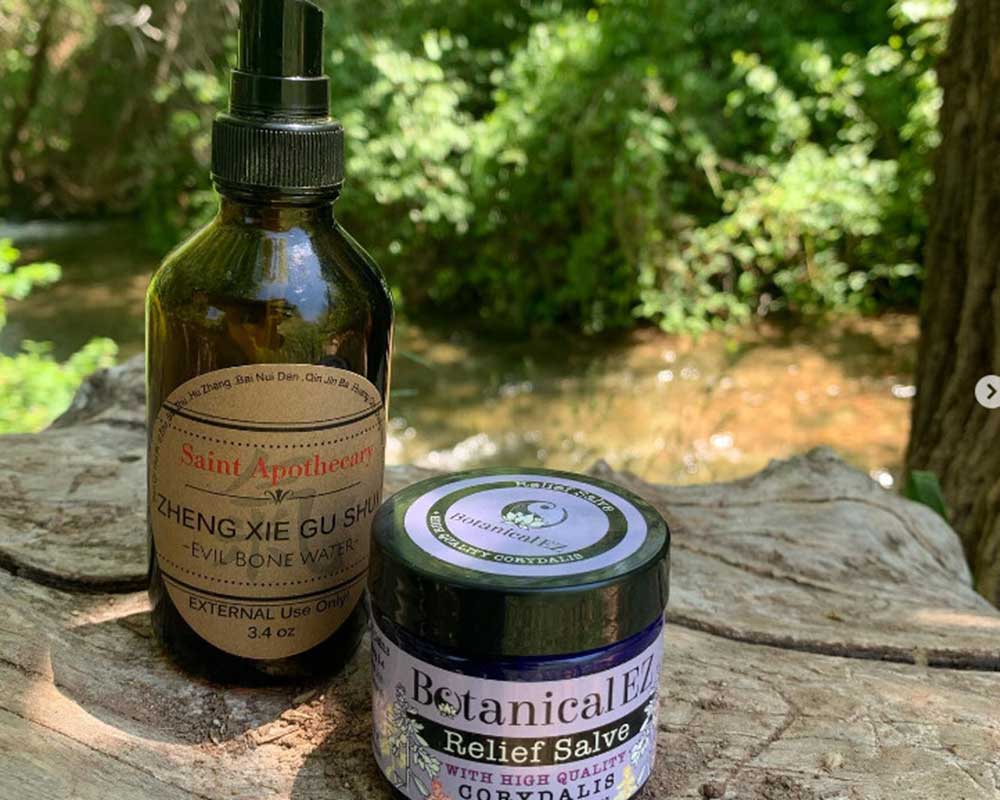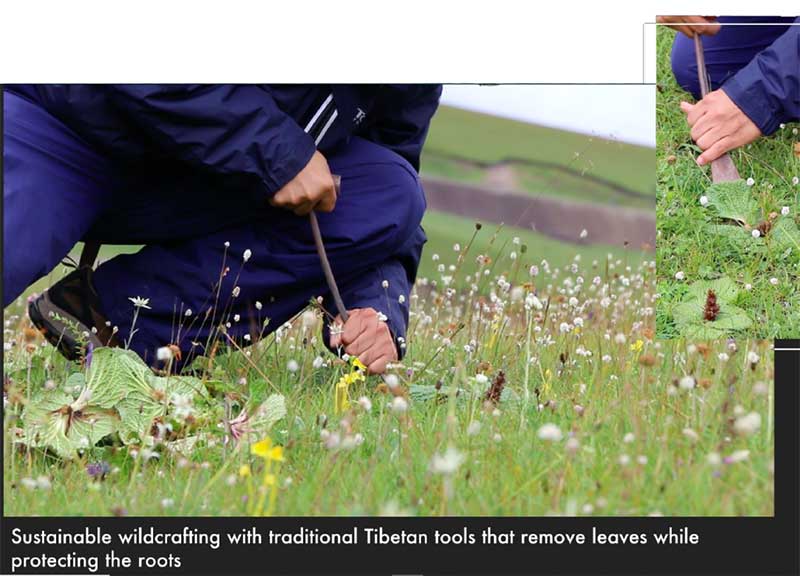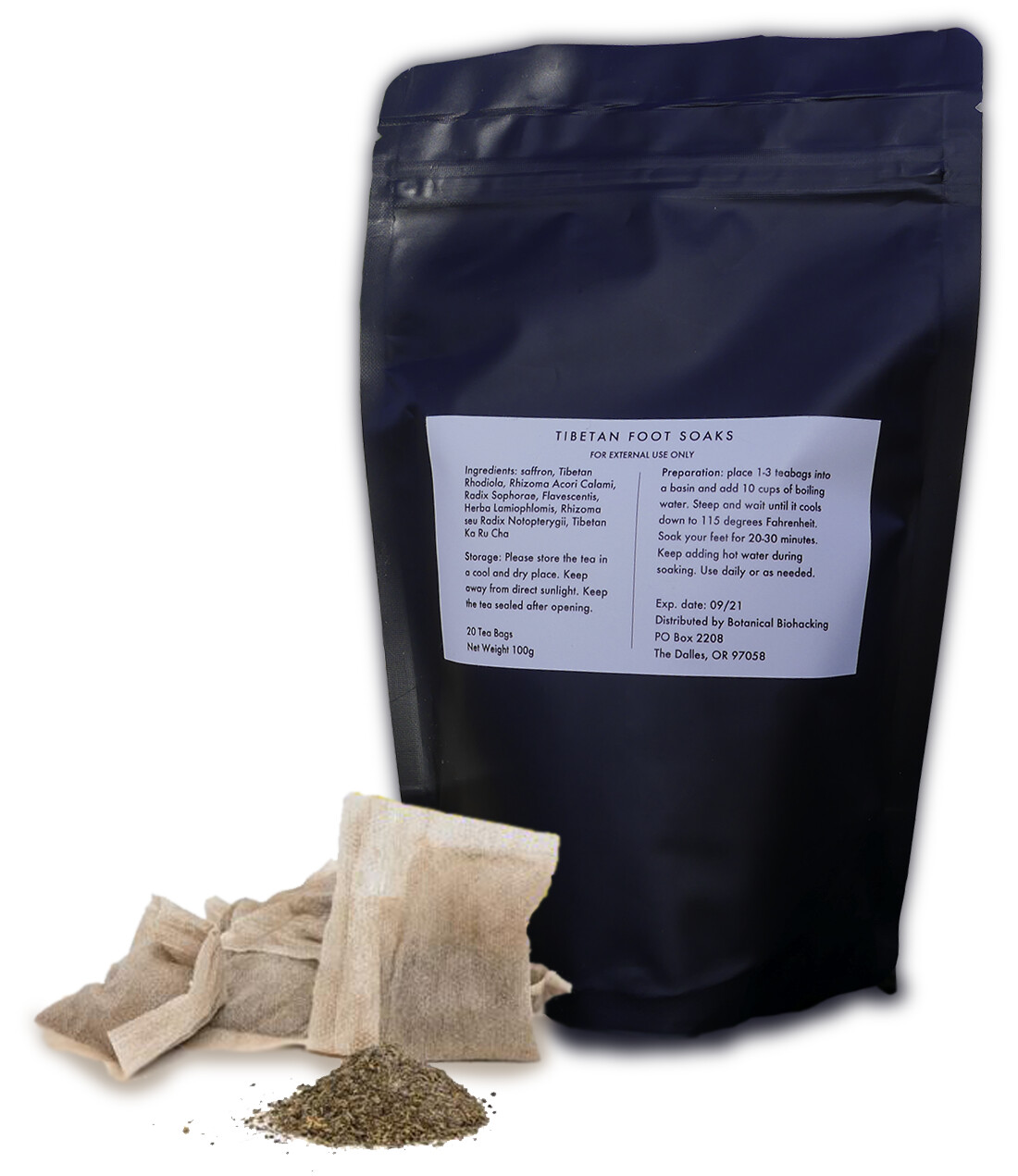
Explanation of the origins and traditional uses
Tibetan Foot Soaks are specially packed tea bags containing a herbal mixture of Chinese herbs and minerals that have been shown to be particularly effective at alleviating chronic pain and improving circulation. Commonly used by practitioners of Chinese medicine, these natural soaks have become increasingly popular in Western medicine as well due to their effectiveness.
The Tibetan herbal foot soak is designed to get rid of blood stasis, wind, cold, and phlegm from the channels. (Traditional Chinese Medicine) Modern-day living, along with a culture that influences us to eat more than we need, particularly foods that we really shouldn’t, creates phlegm.
Unlike our ancestors, many people live relatively sedimentary lifestyles, which creates less blood flow throughout the body, but add phlegm on top of that, and now you’ve got chronic blood stasis.
Additionally, this lack of movement and chronic stress (without a proper outlet) leads to increased muscle stiffness as we age, especially in our feet.
Quick Links to the Sections Below
- Explanation of the origins and traditional uses
- Ingredients and their benefits
- How are they different from other types of foot soaks?
- How Do You Use Tibetan Herbal Foot Soaks?
- How long do I soak my feet?
- Are There Any Side Effects or Considerations?
- What Are the Benefits of Tibetan Herbal Foot Soaks?
- Are Foot Soaks Safe While Pregnant?
- Where Can You Buy Authentic Tibetan Herbal Foot Soaks?
- Learn More About Tibetan Herbal Foot Soaks
Ingredients and their benefits
8 Sacred Herbs & Minerals Used in Tibetan Foot Soaks
Herba Lamiophlomis Rotata/ Du Yi Wei
One of the first herbs in this formula is called Du Yi Wei, which stops
hemorrhaging. If you have internal bleeding from an injury or inflammation
that’s causing dilation of the blood vessels, this stops it. Du Yi Wei is an
antioxidant that promotes red blood cell production and kills pain. Most of
these herbs are blood thinning in nature which helps prevent blood clotting.
It has a positive effect on cytokines (cellular communicators), promotes the
production of red blood cells, and has a positive effect on arterial stenosis.
Rhodiola Tebetica/Hong Jing Tian
Tibetan Rhodiola has become a commonly known remedy for altitude
sickness for its ability to oxygenate the blood. It improves metabolic
functioning, has antioxidant effects, improves immune function, and has
some anti-cancer effects. Hong Jing Tian increases oxygen in the blood
and improves immune function and helps people fight fatigue. It is
incredibly good for chronic long-term fatigue disorder or people who have
been in a state of chronic inflammation.
Stigma Croci/ Zang Hong Hua
This is Tibetan saffron. It is considered stronger (and much more
expensive) than traditional saffron. It has anti-inflammatory and
pain-relieving effects. It has been used to improve emotional well-being,
treat cough, increase blood flow, and lower blood pressure. It has notable
antioxidant properties, and some reports indicate it may serve as an
aphrodisiac.
Most of the blood clots that cause people to have a heart attack or stroke
are found in the legs, so the increase in circulation at the same time using
herbs to reduce these clots, it can drastically help to improve longevity. By
doing these foot soaks as a regular part of health maintenance, it’s possible
to fend off heart attacks and strokes. This is something that’s very
commonly used throughout Tibet and China.
Notopterygii Rhizoma ET Radix/ Qiang Huo
Qiang Huo grown at high altitudes like what is used in our foot soaks was
at one point reserved for the elite of Beijing. It has anti-inflammatory and
antifungal properties and is widely used for its analgesic effects. Research
shows it improves blood flow to the coronary arteries and is useful in the
treatment of arrhythmia. Here’s more.
We have sourced high-quality Qiang Huo, which is very important as this
herb is traditionally used for arthritis pain, is an anti-inflammatory and
inhibits fungus. Fungi in the body can have direct effects on pain signaling
and this helps to kill it. This herb also does wonders to help regulate the
timing of the heart. Incredibly this herb helps with irregular heart rate.
People have a heart rate that’s too slow or too fast or have an irregular
rhythm. We use this extensively with our cardiology patients and just using
this foot soak it’s been able to help restore their normal heart rhythm. This
herb works very well in conjunction with another Tibetan herb called Hong
Jing Tain or Tibetan Rhodiola.
Acori Calami Rhizoma / Zang Chang Pu
Zang Chang Pul has a mild tranquilizing effect to relax people. It is
antibacterial and has regulatory effects on the digestive system. This is so
crucial for diseases involving the gut-brain axis. Some people can’t take
herbs or supplements but by using Zang Chang Pu transdermally, it’s still
able to affect their digestion, in a very positive way, without asking their
stomach to digest anything new.
Zang Chang Pu is known for its usefulness in treating a variety of
neuropathies (chemo-induced, nerve transection, and chronic constriction
type). This may be part of the reason these foot soaks are so often used
with sciatica.
Radix Sophorae Fiavescentis / Ku Shen
Ku Shen has a long history of use in Chinese medicine. Often used for
skin conditions and has broad-spectrum antimicrobial and antifungal
effects. Ku Shen constituents also exhibit inhibitory effects on bacterial
biofilms, an extremely important mechanism for chronic disease conditions.
This cannot be understated; biofilms are associated with most chronic
diseases in the body. These bacterial properties have gene expression
which causes up to 20% of themselves to become mucus. They cover
themselves in mucus to avoid the burn of the inflammation as your body
goes into fever mode. By covering themselves, it allows them to go through
the body and spread. Once the inflammation in your body goes down, they
begin eating other tissues. Bacterial biofilms are associated with
Parkinson’s, dementia, and other chronic diseases. Particularly
obesity is associated with biofilms. Systemic inflammation causes the
body to store fat. Ku Shen, in addition, is antifungal, antibacterial, antiviral
and antiparasitic.
Rhizoma Ziniberis Recens / Gan Jiang
Gan Jiang (ginger) is another beautiful herb in this formula. It is Liver
protective. Gan Jiang protects the gastric mucosa of the stomach lining.
Gan Jiang is widely used in traditional medicines, both within herbal
formulas and dietary therapy. The health effects of this herb are
widely researched (positive GI effects, cardiovascular, antimicrobial, etc.).
Apart from some of the most apparent effects on digestion Gan Jiang also
exhibits protective effects on the liver, pain-relieving and anti-inflammatory
effects, and also aids in preventing blood clots.
Folium Artemisiae Argyi/ AiYe
Ai Ye, famously known as mugwort, has been burned traditionally over
areas of the body, such as the lower back to improve such systems as the
Hypothalamic-Pituitary-Adrenal axis. Ai Ye contains volatile oils
which transfer transdermally. These oils are antiviral, antibacterial, and
antifungal. These oils also inhibit blood clotting and increase the secretion of
bile, which can help you burn fat..
Tibetan salt
Tibetan black salt, also known as Ka Ru Cha has a unique place in these
soaks. It first operates to preserve the herbs and prevent
them from spoiling. But it also sports an impressive mineral content,
including a gaseous compound known as hydrogen sulfide (which gives the
foot soaks their characteristic smell).
How are they different from other types of foot soaks?
Tibetan foot soaks stand apart as a symbol of quality, compassion, and ecological responsibility. From handpicking herbs with sustainably crafted tools to collaborating with local experts, every detail is attended to with care and reverence. As you immerse your feet in these nourishing soaks, know that you’re part of something bigger – a practice that honors the heaven, earth, and people while nurturing the ecology and culture of a precious region. Enjoying a Tibetan foot soak isn’t just self-care; it’s a commitment to global care.
1. Top Quality Herbs: Respecting Heaven
The herbs in these foot soaks are of the finest quality, harvested with traditional Tibetan tools. These tools are crafted to remove the leaves while protecting the roots, ensuring the sustainable growth of the plants. Timing is key, as they are collected at specific times of the year to preserve their unique properties.
2. Purity and Sustainability: Respecting Earth
Every herb is grown under strict conditions, free from pesticides, and sustainably wildcrafted. The gathering process is mindful; for instance, only 20% of a bunch of Du Yi Wei is taken, leaving the rest to flourish for the next year. This careful approach safeguards the natural beauty and ecology of the region.
3. A Collaborative Effort: Respecting People
Behind these foot soaks, there’s a team of wonderful individuals working in harmony with local Tibetan doctors and herb gatherers. Together, they bring a blend of expertise and traditional wisdom. The local government is also involved, ensuring that the herb-growing regions are preserved and thriving.
4. Blessings and Cultural Preservation
Each foot soak has been blessed by a Buddhist priest, honoring the spiritual traditions of the region. By choosing these foot soaks, you’re not only indulging in relaxation; you’re actively contributing to preserving the culture and traditions of Tibet. It’s a practice that respects both people and the environment rather than exploiting them.
5. A Commitment to Global Wellness
The team is dedicated to providing high-quality medicine to those in need, bridging traditional practices with modern wellness needs. It’s about healing, well-being, and a genuine connection to the earth and its inhabitants.
How Do You Use Tibetan Herbal Foot Soaks?
Tradition foot soak tub
1. Prepare Your Container:
* Choose a container that’s large enough to cover your ankles (covering your calves works even better!).
* Add 2 to 3 bags of the special Tibetan foot soak herbs.
2. Brew the Herbs:
* Pour boiling water over the herb bags and let them brew.
* Wait for the water temperature to come down to 100-105°F. This is a great starting point for your soak.
3. Time for a Soak:
* Step your feet into the container and let them soak for about 30 minutes.
* Feel the heat as it spreads around your feet and legs. If you notice any cold spots or areas where the heat doesn’t seem to flow, try to relax and allow those areas to open up.
* If you like, you can add more hot water gradually, raising the temperature up to around 110°F.
4. Look for a Light Sweat:
* After soaking for about 30 minutes, you should break a light sweat. This is a sign that the soak is doing its magic!
5. Dry Off:
* Take your feet out while they’re still hot, and dry them thoroughly.
* Allow any sweat to dry naturally, but be mindful to avoid drafts or wind exposure, which can cool you down too quickly.
6. Repeat as Needed:
* Use daily for three months if you’re dealing with arthritis.
* Use for three weeks to help with hormonal balance or digestive disorders.
* Once symptoms are relieved, continue to soak 1 to 2 times a week for general health and wellbeing
If You Prefer an Electric Foot Soak Tub:
Electric foot soaks make the process simpler. You can brew the tea bags with hot water from the tub, then use the heater to maintain the temperature. No need to keep adding hot water, so you can relax more! Collapsible electric tubs are available for easy storage.
How long do I soak my feet?
Stage 1: Warm Up
Winter (Stage 1): Like trees store nutrients in their roots in winter, this stage draws energy down to your feet.
What to Do: Start by filling a basin with hot (but safe-to-touch) water. Dip your feet in. Feel the warmth? That’s a good sign! It’s helping your blood vessels open up, which is good for your whole body.
Why It’s Good: This stage helps increase blood flow to your feet and legs. If you have trouble sleeping or need relaxation, this is a great start. If you have high blood pressure, keep this stage short.
Stage 2: Feel the Heat Rise
Spring (Stage 2): Feel the heat rising? That’s like new plants shooting up in spring.
What to Do: Stay with it, and you’ll notice the heat rising up your legs. If you’re new to this, you might only feel it in your shins at first, but with practice, it’ll move upwards.
Why It’s Good: This stage is where the magic happens for pain relief. The heat promotes healing and soothes areas like the knees and lower back.
Stage 3: Heart Warming
Summer (Stage 3): When your heart pumps stronger, it’s like working in the summer heat.
What to Do: You might feel the warmth going up toward your chest. This could make your heart beat a little faster, and that’s usually fine.
Why It’s Good: This stage can increase your energy. If you have high blood pressure, though, you’ll want to be cautious and not let the warmth get this high.
Stage 4: Full Body Warmth
Autumn (Stage 4): Sweating and feeling your lungs open is like the cycle completed, similar to the descending action of autumn.
What to Do: Finally, the warmth will reach your head, and you may start sweating. When this happens, dry off, bundle up, and continue your day.
Why It’s Good: This last stage helps open up your lungs and can further ease pain.
What Are the Benefits of Tibetan Herbal Foot Soaks?
Foot soaks are more than just a luxury spa treatment. They’re an accessible, therapeutic practice that can mimic some of the benefits of exercise and movement without the drawbacks. Whether dealing with specific health concerns or simply seeking relaxation and self-care, foot soaks can be a soothing step toward better health and wellness. G
1. Improved Blood Circulation: By warming the feet, foot soaks help increase blood flow to the extremities. This can be especially beneficial for those who are less mobile or those with circulation problems.
2. Encourages Sweating and Water Metabolism: Sweating is a natural detoxifying process. Foot soaks encourage sweating, helping the body rid itself of toxins and supporting water metabolism.
3 When You Can’t Move: For those unable to engage in traditional exercise, foot soaks can provide similar cardiovascular benefits. Tibetan foot soaks, for example, increase the heart rate, much like mild exercise, promoting heart health.
4. Pain Relief and Healing: Some foot soaks’ combination of warmth and herbal properties can alleviate pain and promote healing. They’re exceptional for aggravated conditions when you or the weather is cold.
5. Ease of Use and Accessibility: Foot soaks are convenient and can be done at home with minimal equipment. Whether you use a traditional basin or an electric foot soak tub, this relaxing practice is within everyone’s reach.
Are There Any Side Effects or Considerations?
In general, Tibetan Herbal Foot Soaks are considered a safe and relaxing way to promote wellness, but it is always wise to be mindful of the below considerations to ensure a positive and healthful experience. If in doubt, don’t hesitate to seek professional medical advice.
Potential Allergic Reactions:If you have known allergies to specific herbs or plants, you should consult the ingredient list of the foot soak or speak with a healthcare provider to ensure that the product is safe for you. An allergic reaction to the herbs could cause itching, rash, or other skin irritations.
Contraindications People with certain medical conditions, such as severe heart issues, open wounds on the feet, or uncontrolled diabetes, may need to consult with a healthcare provider before using these foot soaks. The heat and specific herbs could interact with underlying conditions.
Safety Measures and Guidelines: Always follow the instructions provided with the foot soaks, including the recommended water temperature and soaking time. Starting with a lower temperature and gradually increasing it may help prevent burns or discomfort. If you feel any adverse effects, such as dizziness or excessive sweating, it’s advised to stop the soak and consult with a healthcare provider.
Children and Elderly: Extra caution should be exercised when using foot soaks with children or the elderly, as their skin may be more sensitive to heat and herbs.
Maintenance of Equipment: If using an electric foot soak tub, make sure to follow the manufacturer’s guidelines for cleaning and maintenance to ensure safe and effective use.
Are Foot Soaks Safe While Pregnant?
It’s essential to consult with a healthcare provider to determine if Tibetan Herbal Foot Soaks are suitable for your particular stage and condition of pregnancy. Following professional guidance ensures safety and maximizes the benefits of this therapy.
Tibetan Herbal Foot Soaks are generally contraindicated for early-stage pregnancy, as they can influence descending and moving Qi and blood, which is not recommended in the early stages. However, under the guidance of a healthcare professional, these foot soaks may be beneficial closer to delivery.
In early pregnancy, there’s a need for more stability and nourishment rather than movement and descent within the body. Foot soaks that induce too much descending and moving of Qi and blood can be counterproductive during this sensitive stage.
Closer to delivery, foot soaks can relax tissues, promote downward movement, and clear dampness. They also help blood circulation to the uterus and pelvis, which may minimize trauma to the tissue. Some healthcare professionals even find that foot soaks can initiate labor quicker and enhance contractions once labor starts.
Under the supervision of a healthcare provider, a general treatment plan might include:
– 3 soaks/week (1 bag – 30 min soak) [week 37]
– 4 soaks/week (1 bag – 30 min soak) [week 38]
– 5 soaks/week (1 bag – 30 min soak) [week 39]
– 6 soaks/week (1 bag – 30 min soak) [week 40]
Where Can You Buy Authentic Tibetan Herbal Foot Soaks?
Authentic Tibetan Herbal Foot Soaks can be purchased through various channels, depending on your needs:
Wholesale Purchases: If you’re looking to buy in bulk, you can create a wholesale account at [Botanical Biohacking. This option is ideal for retailers, health practitioners, or anyone needing larger quantities.
First-Time or Individual Orders: For those interested in trying out the foot soaks or making a single purchase, 30 tea bags can be obtained at Valley Health Store. This option allows individuals to experience the benefits of these unique foot soaks without committing to a large order.
Always ensure that you are purchasing from a reputable source to guarantee the quality and authenticity of the Tibetan Herbal Foot Soaks.
Tibetan Herbal Foot Soaks offers a fascinating and effective way to boost blood circulation, ease pain, and improve overall wellness. From understanding how these foot soaks work to knowing when and how to use them, particularly during special considerations like pregnancy, this FAQ guide has provided comprehensive insights. Whether you’re seeking relaxation, pain relief, or assistance in unique health conditions, these herbal foot soaks could be an excellent addition to your self-care routine. For those looking to purchase or learn more about Tibetan Herbal Foot Soaks, be sure to consult with a healthcare provider and explore reputable sources online. Feel free to share this guide with others who may benefit from this ancient and revitalizing practice!
.
We make available natural products that have been observed to make a difference in the lives of our patients, friends and family. You’re in good hands shopping with us.
About the Author
Willard Sheppy is a writer and healthcare practitioner who seamlessly melds scientific knowledge with practical applications in engaging and authoritative articles. He holds a Bachelor of Science in Environmental Science from Oregon State University and a Master’s in Acupuncture and Oriental Medicine from the distinguished Oregon College of Oriental Medicine.
In his work, Willard skillfully combines his extensive educational background in scientific research with his practical experience as a healthcare practitioner. Willard balances his life with martial arts and cherished family adventures. As a father of three, he often leads his family on camping and hiking trips along the breathtaking Oregon coast.
Connect with Willard on LinkedIn at linkedin.com/in/valleyhealthclinic or learn more about his services at valleyhealthclinic.com. Embark on this journey towards holistic health with Willard!
